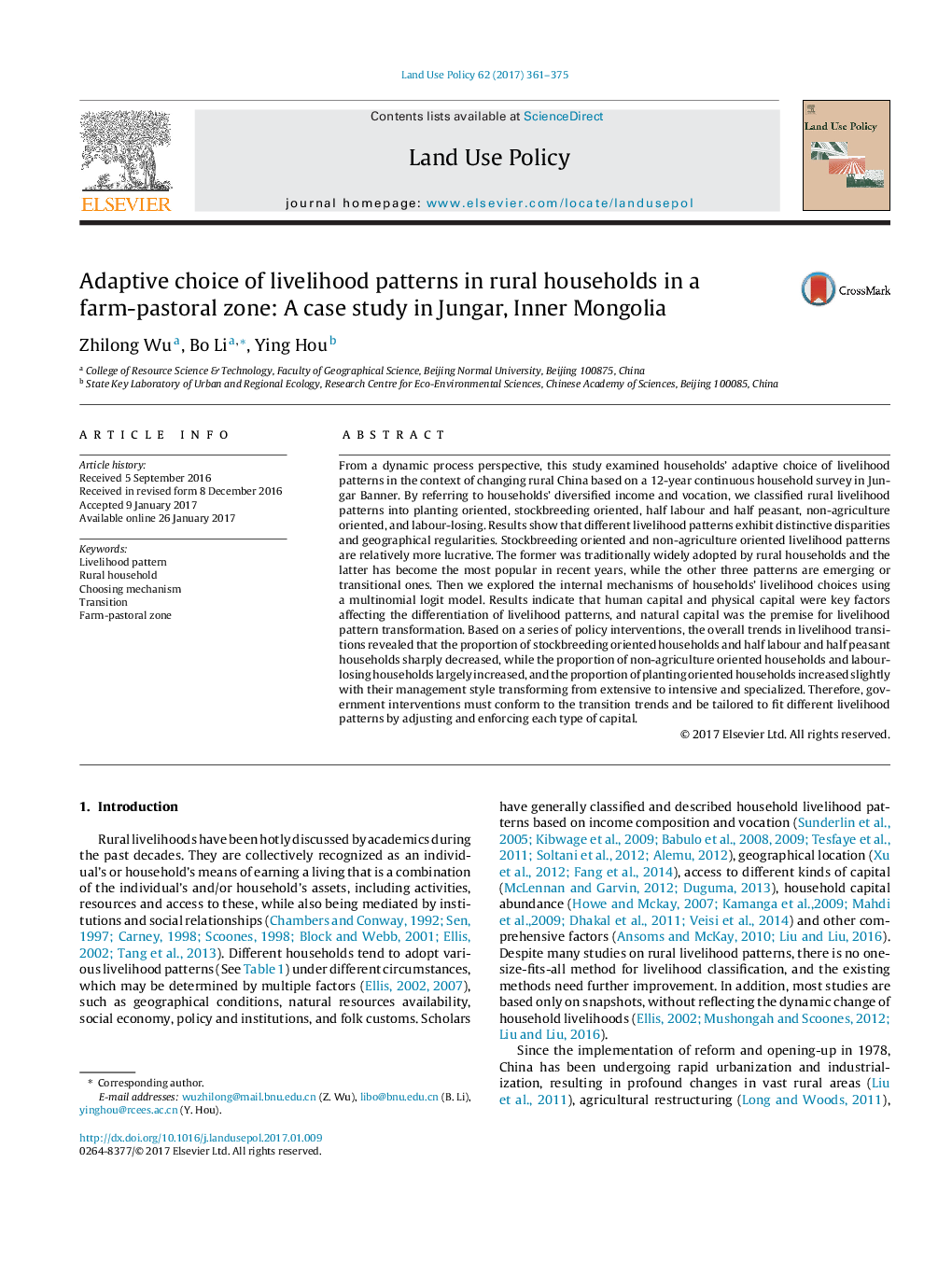| کد مقاله | کد نشریه | سال انتشار | مقاله انگلیسی | نسخه تمام متن |
|---|---|---|---|---|
| 6461248 | 1421821 | 2017 | 15 صفحه PDF | دانلود رایگان |
- This study explored the dynamic transition of rural livelihood in Jungar in the context of changing rural China.
- 5 livelihood patterns identified in the farm-pastoral zone exhibit distinctive disparities and geographical regularities.
- Human capital, natural capital and physical capital are significant inner factors affecting households' livelihood choices.
- Policies as external factors had conspicuous different influences on rural livelihood across different patterns.
From a dynamic process perspective, this study examined households' adaptive choice of livelihood patterns in the context of changing rural China based on a 12-year continuous household survey in Jungar Banner. By referring to households' diversified income and vocation, we classified rural livelihood patterns into planting oriented, stockbreeding oriented, half labour and half peasant, non-agriculture oriented, and labour-losing. Results show that different livelihood patterns exhibit distinctive disparities and geographical regularities. Stockbreeding oriented and non-agriculture oriented livelihood patterns are relatively more lucrative. The former was traditionally widely adopted by rural households and the latter has become the most popular in recent years, while the other three patterns are emerging or transitional ones. Then we explored the internal mechanisms of households' livelihood choices using a multinomial logit model. Results indicate that human capital and physical capital were key factors affecting the differentiation of livelihood patterns, and natural capital was the premise for livelihood pattern transformation. Based on a series of policy interventions, the overall trends in livelihood transitions revealed that the proportion of stockbreeding oriented households and half labour and half peasant households sharply decreased, while the proportion of non-agriculture oriented households and labour-losing households largely increased, and the proportion of planting oriented households increased slightly with their management style transforming from extensive to intensive and specialized. Therefore, government interventions must conform to the transition trends and be tailored to fit different livelihood patterns by adjusting and enforcing each type of capital.
Journal: Land Use Policy - Volume 62, March 2017, Pages 361-375
